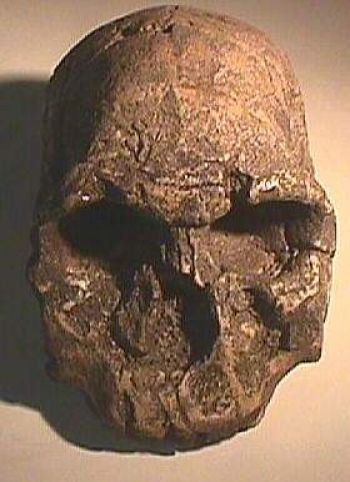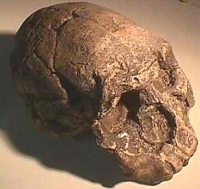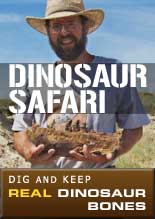
Louis Leakey saw KNM-ER 1470 only days before his death, and, believing the skull to be a million years older than it was, classified it as an “indeterminate species of Homo.” When scientists later dated the skull to 1.9 million years old, the same age to when Homo habilis lived, the scientific community thought KNM-ER 1470 must then belong to Homo habilis - but the mandible (jaw) and teeth just didn’t seem to fit within acceptable limits of variation or differences for H. habilis. Even if KNM-ER 1470 was considered a large H. habilis male, the size difference would be too great compared to KNM-ER 1813, an established H. habilis female, for the two to both belong to the same species. Over several weeks following its discovery, scientists Meave Leakey and Bernard Wood reconstructed KNM-ER 1470’s skull from more than 150 fragments, revealing a large cranium with a long, wide, flat face. While tooth roots show that this early human had large teeth, the skull lacked the massive jaw muscle features characteristic of robust australopithecines.
Today, most scientists now accept KNM-ER 1470 as belonging to Homo rudolfensis -- as species that co-existed in the Turkana Basin, northern Kenya, with three other species sometime between 2.0 and 1.5 million years ago: Homo habilis, Homo erectus, and Paranthropus boisei.
resin
7 inches high
Item 1557
Category: Replicas
Type: Skulls
Phylum: Vertebrates
Class: Hominids & Humans
MORE PHOTOS:


Now Over 1,000 Items!
PrehistoricStore.com offers the largest selection of replica fossils and other fossil-related products anywhere in the world!
Download a Full Catalog (3MB PDF)
OVER 260 PAGES OF REPLICAS AND MORE!
